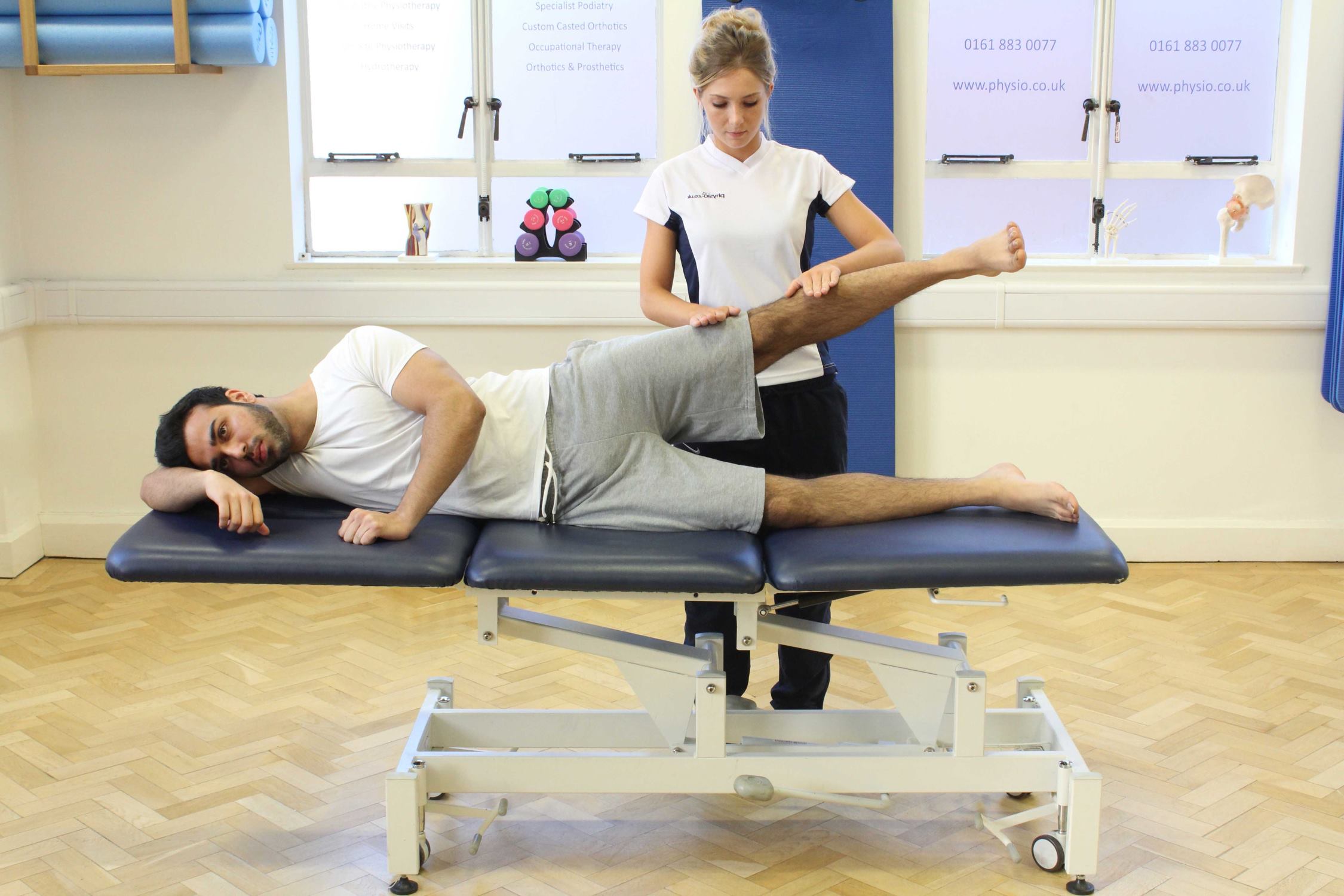Home>Training & Techniques>The Number Of Steps In A Mile: A Comprehensive Guide


Training & Techniques
The Number Of Steps In A Mile: A Comprehensive Guide
Published: March 5, 2024
Discover the optimal training and techniques for determining the number of steps in a mile with our comprehensive guide. Achieve your fitness goals efficiently and effectively.
(Many of the links in this article redirect to a specific reviewed product. Your purchase of these products through affiliate links helps to generate commission for Therunningadvisor.com, at no extra cost. Learn more)
Table of Contents
Understanding the Relationship Between Steps and Mileage
The relationship between steps and mileage is a fundamental aspect of walking and fitness. Understanding this correlation can significantly impact one's physical activity goals and overall well-being. Essentially, the number of steps taken directly influences the distance covered, providing a tangible measure of one's walking or running efforts.
When it comes to determining the number of steps in a mile, it's essential to recognize that this value can vary based on several factors. These factors include an individual's stride length, walking speed, and overall fitness level. For instance, a person with a longer stride length may cover more distance with each step, while someone with a shorter stride length may need to take more steps to cover the same distance.
Moreover, the terrain and incline can also influence the relationship between steps and mileage. Walking uphill or on uneven surfaces may require more effort and, consequently, more steps to cover a mile compared to walking on a flat, smooth path.
Understanding the relationship between steps and mileage is not only beneficial for tracking physical activity but also for setting and achieving fitness goals. By knowing the average number of steps required to cover a mile, individuals can better gauge their daily activity levels and progress towards their desired fitness outcomes.
In essence, the relationship between steps and mileage serves as a practical and accessible way to measure and monitor physical activity. By being mindful of this connection, individuals can make informed decisions about their exercise routines, set realistic targets, and stay motivated to lead an active and healthy lifestyle.
Read more: A Comprehensive Guide To Running Easy Miles
Factors Affecting the Number of Steps in a Mile
The number of steps required to cover a mile is influenced by various factors, each playing a crucial role in determining the overall distance covered during a walking or running activity. Understanding these factors is essential for individuals looking to optimize their physical activity and achieve their fitness goals.
-
Stride Length: One of the primary factors affecting the number of steps in a mile is an individual's stride length. Stride length refers to the distance covered with each step. Naturally, individuals with longer legs tend to have a longer stride length, enabling them to cover more ground with each step. Conversely, those with shorter legs may need to take more steps to cover the same distance. Therefore, an individual's unique anatomical characteristics significantly impact the number of steps required to complete a mile.
-
Walking Speed: The pace at which an individual walks also influences the number of steps in a mile. Generally, walking at a faster speed results in longer strides, requiring fewer steps to cover a mile. On the other hand, walking at a slower pace may necessitate more steps to reach the same distance. Therefore, walking speed directly affects the efficiency of each step and, consequently, the overall step count in a mile.
-
Terrain and Incline: The type of terrain and incline also play a significant role in determining the number of steps needed to cover a mile. Walking on flat, even surfaces allows for a more consistent and efficient stride, potentially reducing the step count. In contrast, navigating uphill or uneven terrain demands greater effort and shorter, more frequent steps, leading to an increase in the number of steps required to cover the same distance.
-
Physical Fitness: An individual's physical fitness level can impact the number of steps in a mile. Those who are more physically fit may exhibit a more efficient walking or running technique, covering greater distances with fewer steps. Conversely, individuals who are less fit may need to take more steps to cover the same distance due to reduced stride length and overall endurance.
-
Footwear and Attire: The choice of footwear and attire can also influence the number of steps in a mile. Wearing supportive, comfortable footwear can enhance walking efficiency, potentially reducing the step count. Conversely, ill-fitting or unsuitable footwear may lead to discomfort and a less efficient gait, requiring more steps to cover a mile.
Understanding these factors is essential for individuals aiming to optimize their walking or running routines. By recognizing the impact of stride length, walking speed, terrain, fitness level, and attire on the number of steps in a mile, individuals can make informed adjustments to their physical activity, ultimately enhancing their overall fitness experience.
How to Calculate the Number of Steps in a Mile
Calculating the number of steps in a mile is a straightforward process that involves understanding one's stride length and applying a simple formula. By determining the average length of each step and utilizing this information, individuals can accurately estimate the number of steps required to cover a mile.
To begin, it's essential to measure one's stride length. This can be achieved by walking a known distance, such as 100 feet, and counting the number of steps taken. Once the distance and step count are recorded, dividing the total distance by the number of steps provides the average length of each step. For instance, if 100 feet were covered in 120 steps, the average stride length would be calculated as 100 feet divided by 120 steps, resulting in approximately 0.83 feet per step.
With the average stride length determined, calculating the number of steps in a mile becomes a matter of simple arithmetic. Since a mile is equivalent to 5,280 feet, dividing this distance by the average stride length yields the approximate number of steps required to cover a mile. Using the previously calculated average stride length of 0.83 feet per step, the formula would be as follows: 5,280 feet divided by 0.83 feet per step, resulting in approximately 6,352 steps in a mile.
It's important to note that this method provides an estimation based on the average stride length obtained from a specific distance. Individual variations in stride length and walking patterns may lead to slight discrepancies in the calculated number of steps. Therefore, it's advisable to perform the measurement over multiple distances and walking speeds to obtain a more accurate average stride length for precise calculations.
Furthermore, technological advancements have introduced pedometers and fitness trackers that automatically monitor step count, providing real-time feedback on the number of steps taken. These devices offer a convenient and reliable means of tracking steps and distance, eliminating the need for manual calculations.
By understanding how to calculate the number of steps in a mile, individuals can gain valuable insights into their walking or running routines. This knowledge empowers individuals to set and achieve specific fitness targets, monitor their progress, and make informed adjustments to their physical activity, ultimately contributing to a healthier and more active lifestyle.
Tips for Increasing Your Step Count
Increasing your step count is an effective way to enhance physical activity levels, improve cardiovascular health, and boost overall well-being. Whether you're aiming to meet daily fitness targets or seeking to incorporate more movement into your routine, there are several practical strategies to elevate your step count and maximize the benefits of walking or running. Here are some valuable tips for increasing your step count:
-
Set Achievable Goals: Establish daily or weekly step goals that are challenging yet attainable. Gradually increasing your target step count provides a structured approach to enhancing physical activity while allowing for steady progress.
-
Take the Stairs: Opt for the stairs instead of elevators or escalators whenever possible. Climbing stairs is an excellent way to add extra steps to your daily total, contributing to improved leg strength and cardiovascular fitness.
-
Incorporate Walking Breaks: Break up prolonged periods of sitting or sedentary activities with short walking breaks. Set reminders to take a brief stroll around your workplace or neighborhood, promoting circulation and reducing the negative effects of prolonged sitting.
-
Utilize Walking as Transportation: Whenever feasible, choose walking as a mode of transportation for short distances. Walking to nearby destinations not only increases step count but also reduces carbon emissions and supports environmental sustainability.
-
Engage in Active Hobbies: Participate in hobbies or recreational activities that involve walking or movement, such as gardening, dancing, or playing outdoor sports. These activities not only contribute to increased step count but also add enjoyment and variety to your fitness routine.
-
Explore New Routes: Vary your walking routes to explore different terrains and environments. Discovering new paths and scenic locations can make walking more engaging and motivate you to extend your walking duration and distance.
-
Use a Pedometer or Fitness Tracker: Employ a pedometer or fitness tracker to monitor your daily step count. These devices provide real-time feedback, serving as a visual reminder of your progress and encouraging you to reach and surpass your step goals.
-
Join Walking Groups or Challenges: Engage in walking groups or challenges within your community or through online platforms. Participating in group activities fosters accountability, social interaction, and a sense of camaraderie, motivating you to stay consistent with your walking routine.
-
Practice Interval Walking: Incorporate interval walking sessions, alternating between periods of brisk walking and moderate-paced walking. Interval training not only increases step count but also enhances cardiovascular endurance and calorie expenditure.
-
Make Walking Enjoyable: Listen to music, podcasts, or audiobooks while walking to make the experience more enjoyable and immersive. Creating a personalized walking playlist or engaging in educational content can make walking sessions more pleasurable and conducive to longer durations.
By implementing these tips, individuals can effectively boost their step count, elevate their physical activity levels, and reap the numerous health benefits associated with regular walking. Embracing a proactive approach to increasing step count contributes to a more active and vibrant lifestyle, promoting overall well-being and vitality.
The Health Benefits of Walking a Mile
Walking a mile offers a myriad of health benefits that extend beyond physical fitness, encompassing mental well-being and overall vitality. Incorporating regular walking into one's routine, whether as a leisurely stroll or brisk walk, can yield significant advantages for individuals of all ages and fitness levels.
Read more: A Comprehensive Guide To Running Nutrition
Cardiovascular Health
Walking a mile serves as an effective cardiovascular exercise, promoting heart health and circulation. Engaging in brisk walking elevates heart rate and enhances blood flow, contributing to improved cardiovascular endurance and reduced risk of heart disease. The consistent movement of walking stimulates the heart and supports the efficient transport of oxygen and nutrients throughout the body, fostering a healthy cardiovascular system.
Weight Management
Walking a mile aids in calorie expenditure and weight management, making it an accessible and sustainable form of physical activity. Regular walking sessions contribute to the burning of calories, thereby supporting weight loss or weight maintenance goals. Additionally, walking helps to boost metabolism and improve body composition, making it an integral component of a balanced approach to managing body weight and promoting overall well-being.
Mental Clarity and Stress Reduction
The act of walking, particularly in natural outdoor settings, offers mental clarity and stress reduction benefits. Taking a mindful walk amidst green spaces or scenic environments can alleviate mental fatigue, enhance mood, and reduce stress levels. The rhythmic motion of walking, coupled with exposure to natural surroundings, promotes relaxation and mental rejuvenation, fostering a sense of calm and tranquility.
Joint Health and Mobility
Walking a mile contributes to joint health and mobility, providing a low-impact form of exercise that supports the strength and flexibility of the lower body. The controlled, repetitive motion of walking helps to lubricate the joints, reduce stiffness, and improve overall mobility. Furthermore, walking serves as an effective way to enhance muscular endurance and stability, promoting functional movement and reducing the risk of musculoskeletal issues.
Longevity and Disease Prevention
Regular walking has been associated with increased longevity and a reduced risk of chronic diseases. Studies have shown that consistent engagement in walking activities is linked to a lower incidence of conditions such as diabetes, hypertension, and certain types of cancer. By incorporating walking into daily routines, individuals can proactively contribute to disease prevention and promote overall longevity.
Social Connection and Community Engagement
Walking a mile provides opportunities for social connection and community engagement, fostering a sense of belonging and camaraderie. Participating in group walks, community events, or charity walks not only promotes physical activity but also encourages social interaction, creating a supportive network and a sense of community. The social aspect of walking contributes to mental well-being and enhances the overall experience of physical activity.
In essence, walking a mile offers a holistic approach to health and well-being, encompassing physical, mental, and social dimensions. Embracing the numerous health benefits of walking serves as a proactive step towards leading an active and vibrant lifestyle, promoting overall vitality and longevity.














